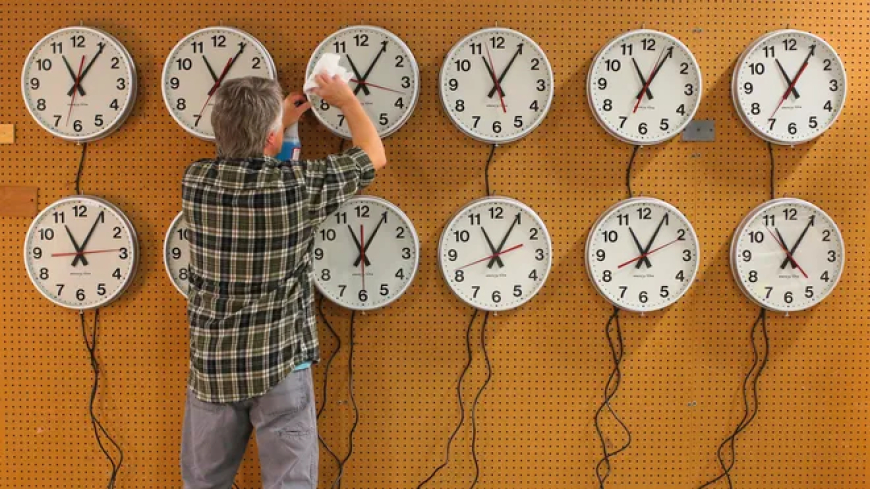Get Ready to ‘Turn Back the Clock’: Daylight Saving Time Concludes This Sunday 2024
As we approach Sunday, November 5, 2024, people across the United States will once again be adjusting their clocks, marking the official end of Daylight Saving Time (DST) for the year. Known commonly as the “fall back,” this time change returns us to Standard Time, shifting daylight earlier in the morning and making evenings seem shorter. For those wondering about the history, purpose, and best ways to transition smoothly, here’s a comprehensive guide to Daylight Saving Time and the annual adjustment.
Why We 'Fall Back': The Concept of Daylight Saving Time
1. Understanding Daylight Saving Time (DST)
- What Is DST?: Daylight Saving Time is the practice of advancing clocks during warmer months to extend daylight into the evening hours. In the spring, clocks move forward by one hour ("spring forward"), while in the fall, they shift back an hour ("fall back") to return to Standard Time.
- Primary Purpose: Originally intended to make better use of daylight and conserve energy, DST has become a seasonal routine. By shifting an hour of daylight from morning to evening, the intent was to reduce energy consumption and allow for extended outdoor activities after work.
2. A Brief History of DST
- Origins in World War I: DST was first introduced by Germany during World War I to conserve fuel. Many other countries, including the United States, quickly followed.
- Becoming Standard in the U.S.: Although it fell out of favor after the wars, DST became a federal policy in the U.S. in 1966 with the Uniform Time Act. However, it remains optional, and states can choose to observe it or opt out entirely.
- Not Observed Everywhere: Some areas, such as Hawaii, most of Arizona, and U.S. territories, do not observe DST, choosing instead to remain on Standard Time year-round.
3. The Shift Back to Standard Time
- When It Happens: The “fall back” takes place on the first Sunday in November, at 2:00 a.m., when clocks are set one hour backward. This adjustment grants an extra hour of sleep but leads to shorter daylight in the evenings.
- Impact on Daily Routines: Many individuals find their sleep and work patterns briefly disrupted as their bodies adjust to the sudden shift in light and schedule.
How to Prepare for the End of Daylight Saving Time
While “falling back” gives us an extra hour, the change can still disrupt sleep patterns and daily routines. Here are ways to ease the transition:
1. Adjust Your Sleep Schedule Gradually
- Go to Bed Earlier: Start moving your bedtime earlier by about 15 minutes each night leading up to the time change. This gradual shift can help your body adjust smoothly.
- Wake Up a Little Earlier: Similarly, try waking up a bit earlier each day so that by Sunday, your internal clock is already in sync with the new time.
2. Utilize Morning Light
- Get Sunlight Exposure: Daylight helps regulate our body’s natural clock, so spending time in the morning sunlight can help you adapt more easily to the earlier light schedule.
- Open Blinds and Curtains: Letting natural light into your home early in the day can signal to your body that it's time to be alert.
3. Create a Relaxing Evening Routine
- Wind Down Before Bed: Engage in calming activities, like reading or taking a warm bath, to ease into sleep.
- Avoid Screens: The blue light from phones, computers, and TVs can interfere with sleep, so avoid these close to bedtime for a smoother transition.
4. Make Use of Your Extra Hour
- Enjoy the Added Time: Take advantage of the extra hour for activities you often don’t have time for, like exercise, meditation, or even extra sleep.
Pros and Cons of Daylight Saving Time
While the concept of DST was introduced with energy-saving in mind, opinions about its benefits and drawbacks have become more mixed over time.
1. Advantages
- Extended Evening Daylight: Many enjoy the longer daylight in the summer, which allows for more outdoor activities after work.
- Possible Economic Benefits: Studies suggest that extended daylight hours may boost consumer activity, as people are more likely to shop, dine out, or participate in recreational activities when it’s light out.
2. Disadvantages
- Disrupted Sleep: The clock changes can interfere with sleep patterns, especially for those sensitive to changes in their routine.
- Increased Health Risks: Some studies suggest an increased risk of heart attacks and other health issues immediately after the “spring forward” adjustment.
- Minimal Energy Savings: Modern energy consumption patterns have led to doubts about the original energy-saving purpose of DST, with some studies showing negligible benefits.
Frequently Asked Questions About Daylight Saving Time
1. Why Do We Still Observe Daylight Saving Time?
- Though initially aimed at conserving energy, DST continues in the U.S. and other countries primarily due to tradition, despite ongoing debates about its relevance and effectiveness.
2. Will Daylight Saving Time Be Eliminated?
- Several legislative measures have been proposed in the U.S. to make DST permanent, but no law has passed at the national level. States can opt out, but cannot choose DST as their year-round standard without federal approval.
3. Does DST Really Save Energy?
- Energy savings from DST are now considered marginal due to changes in modern electricity consumption, such as increased air conditioning and electronic usage that are less impacted by daylight hours.
Embrace the Time Change and Make It Work for You
Daylight Saving Time can be an opportunity to refresh your routine. Embracing the extra hour in fall can be advantageous, whether it’s getting an extra hour of sleep or adjusting your routine for the upcoming season. By taking simple steps, like adjusting your sleep schedule gradually and soaking up morning sunlight, you can make the transition smoothly.
As clocks turn back on Sunday, use this time to welcome the season's shorter days, allowing a natural rhythm to settle as we move toward winter.


























































